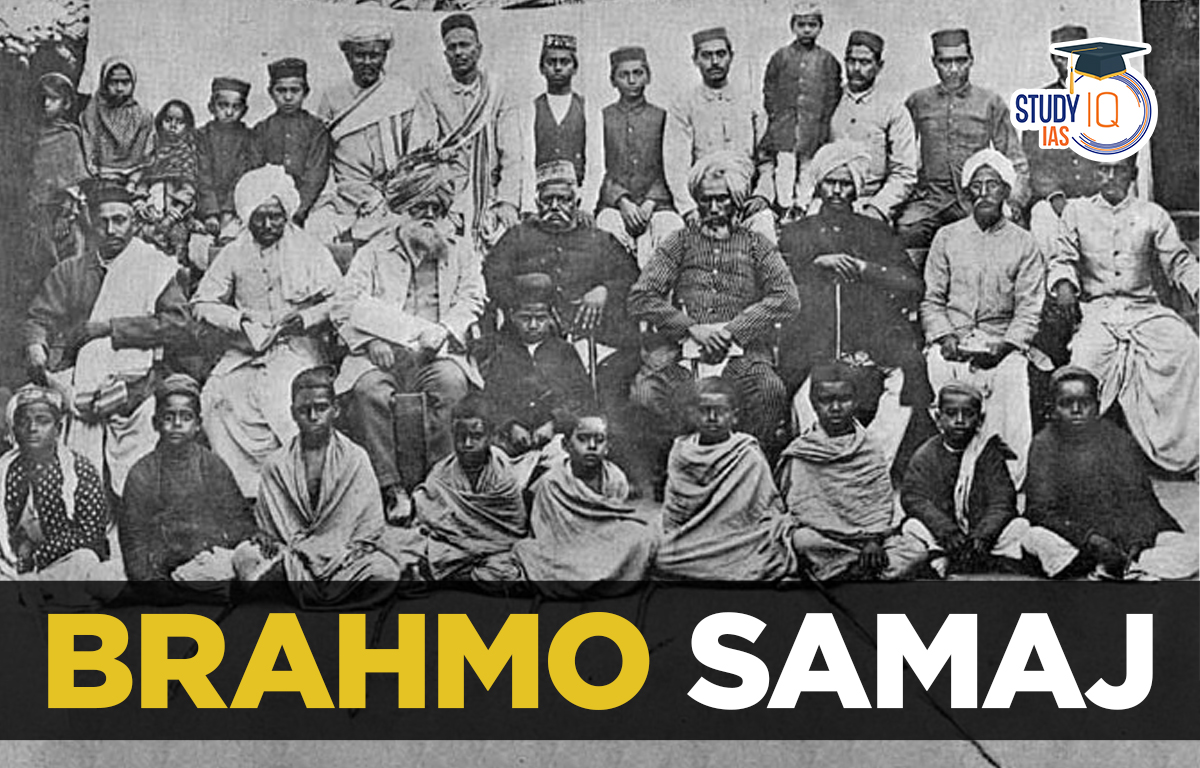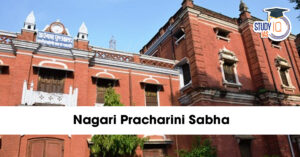Table of Contents
Raja Ram Mohan Roy and Dwarkanath Tagore founded Brahmo Samaj on August 20, 1828, in Calcutta as a reform of the prevalent Brahmanism of the time (specifically Kulin practices), and it started the Bengal Renaissance of the nineteenth century, which was the forerunner of all religious, social, and educational advancements of the Hindu community.
The candidate will learn about the Brahmo Samaj (Established Rajaram Mohan Roy) in this article, which will help with your preparation for the UPSC Civil Service Exam.
What is Brahmo Samaj?
Brahmo Samaj was one of the associations that worked towards growing civil rights movements in India in the 1800s. It was a monotheistic organisation of Hinduism. They began by conducting meetings at Calcutta in 1828. Raja Ram Mohan Roy was the founder of the Brahmo Samaj. With the accomplishment of its goals, it became a trailblazer in the Bengal Renaissance.
| Details | |
|---|---|
| Founding Date | 1828 |
| Founder(s) | Raja Ram Mohan Roy, Debendranath Tagore, Keshab Chandra Sen |
| Original Name | Atmiya Sabha (renamed Brahmo Samaj in 1828) |
| Founding Location | Calcutta (Kolkata), India |
| Core Principles | Monotheism, Opposition to Ritualism, Universal Brotherhood, Focus on Ethical Living, Social Reform, Freedom of Thought |
| Major Reforms | Abolition of Sati, Promotion of Widow Remarriage, Women’s Education, Caste System Reformation |
| Significance | Influenced social reform in India, Modernized Hinduism, Promoted education, Impacted nationalism, International influence |
| Notable Leaders | Raja Ram Mohan Roy, Debendranath Tagore, Keshab Chandra Sen |
Brahmo Samaj Founder
- Founder of Brahmo Sabha/Brahmo Samaj: Established in 1828 by Raja Ram Mohan Roy.
- Titles and Recognition:
- Known as the “Father of Modern India.”
- Received the title “Raja” from Akbar II, the titular Mughal Emperor of Delhi.
- Praised by Tagore as a brilliant star in Indian history.
- Objective: Aimed to combat social ills and promote changes in education and social policy.
- Unitarian Community and Atmiya Sabha: Founded to support his reformist agenda.
- Contributions to Education and Literature:
- Hindu College: Co-founded with David Hare in 1817 in Calcutta.
- Vedanta College and Anglo-Hindu School: Established between 1822 and 1826 to teach monotheistic ideas and a modern, Western curriculum.
- Scottish Church College: Provided the location in 1830 for its establishment, initially known as General Assembly’s Institution.
- Press and Literature:
- Started the Bengali weekly Samvad Kaumudi in 1821.
- Launched the Persian weekly Mirat-ul-Akbar.
- Published The Brahmanical Magazine.
- Legacy in Reform and Education: Established trends in the Indian press and Bengali literature, significantly impacting Indian education and society.
- Influence on Brahmo Samaj: Attracted other well-known reformers who joined and contributed to the movement.
Brahmo Samaj Objective
The Brahmo Samaj was founded with several key objectives:
- Monotheism: Promote the worship of a single, formless God, rejecting idol worship and polytheism prevalent in Hinduism at the time.
- Social Reform: Combat social evils such as sati (the practice of widow immolation), caste discrimination, and child marriage.
- Education: Advocate for modern education based on scientific principles and rational thinking, combining Western and traditional Indian knowledge.
- Rational Worship: Encourage rational and ethical worship practices devoid of rituals and superstitions.
- Universalism: Promote the idea of a universal religion that transcends sectarian boundaries, emphasizing the common spiritual heritage of all humanity.
Brahmo Samaj and Famous Personality Associated
The Brahmo Samaj was associated with several prominent personalities who contributed to its development and the broader reformist movement in India. Here are some of the key figures:
- Raja Ram Mohan Roy:
- Founder: Established the Brahmo Sabha in 1828, which later became the Brahmo Samaj.
- Contributions: Aimed to abolish social evils like sati and promote modern education and monotheistic worship.
- Debendranath Tagore:
- Role: Took over the leadership of the Brahmo Samaj after Raja Ram Mohan Roy’s death.
- Contributions: Strengthened the organization by establishing the Tatwabodhini Sabha in 1839, which later merged with the Brahmo Samaj. He emphasized spiritual and moral upliftment.
- Keshab Chandra Sen:
- Role: Joined the Brahmo Samaj in 1857 and became a prominent leader.
- Contributions: Advocated for more radical social reforms, including the abolition of caste distinctions and early marriage. His ideas led to a schism, resulting in the formation of the Brahmo Samaj of India in 1866.
- Rabindranath Tagore:
- Relation: Son of Debendranath Tagore and a Nobel laureate in literature.
- Contributions: Although not directly involved in the administration, his literary and philosophical works were influenced by the principles of the Brahmo Samaj.
- Anandamohan Bose:
- Role: An active member and leader within the Brahmo Samaj.
- Contributions: Worked towards educational reforms and was a co-founder of the City College in Calcutta, promoting modern education aligned with Brahmo principles.
Brahmo Samaj Principles
-
Monotheism: The Brahmo Samaj believes in an “Infinite Singularity” that is infinite, indivisible, imperceptible, and undefinable.
-
Social reform: The Brahmo Samaj has been involved in social reform, including condemning Hindu prejudice against going abroad, the practice of Sati, child marriage, and polygamy. It also advocates for widow remarriage and attacking casteism and untouchability.
-
Worship: The Brahmo Samaj discards Hindu rituals and adopts some Christian practices in its worship. It is against the principles of priesthood, rituals, and sacrifices, and instead advocates praying and meditating.
-
Reverence: The Brahmo Samaj promotes reverence for all living things while cautioning its members against idolizing anything.
- Denying that any scripture can have the status of ultimate authority
- Having no faith in Avatars (incarnations)
- Denouncing polytheism and idol-worship
- Not insisting on belief in karma (causal effects of past deeds) or samsara (the process of death and rebirth)
- Advocating for women’s share in property
Brahmo Samaj Divisions
| Division | Year of Formation | Key Personality | Characteristics |
|---|---|---|---|
| Adi Brahmo Samaj | 1866 | Debendranath Tagore |
|
| Brahmo Samaj of India | 1866 | Keshab Chandra Sen |
|
| Sadharan Brahmo Samaj | 1878 | Ananda Mohan Bose, Shibnath Shastri, Umesh Chandra Dutta |
|
1. Adi Brahmo Samaj
From “Brahmoism,” this branch of the Brahmo Samaj evolved and became the first organized movement in British India. This was counterproductive to the false notion that the caste system distinguished people according to their caste. For the purpose of eradicating the previous social conventions, it began educating secular India. Raja Ram Mohan Roy, Prasanna Coomar Tagore, and Debendranath Tagore founded the Adi Brahmo Samaj.
2. Sadharan Brahmo Samaj
Disunity within the Brahmo Samaj is what gave rise to the Sadharan Brahmo Samaj. In a public gathering held in the Calcutta Town Hall, the Sadharan Brahmo Samaj was founded. Anand Mohan oversaw activities for the Sadharan Brahmo Samaj. Ananda Mohan Bose, Sib Nath Shastri, and Umesh Chandra Dutta were in charge of this Sadharan Brahmo Samaj religious organisation.
Brahmo Samaj Significance
The Brahmo Samaj was successful in denouncing polytheistic religion and idolatry. By challenging numerous superstitions and dogmas, it helped bring about social transformation. It disapproved of the notion of divine incarnation. The caste structure experienced a notable change as a result. The Brahmo Samaj promoted the idea that morality and a logical intellect are more significant than any text and possess the greatest power. The Brahmo Samaj encouraged society to speak out against child marriage.
Even while the Brahmo Samaj significantly altered many social conventions, it was unable to address notions about the soul’s evolution and the idea of karma. The Doctrine of God in Conscience was also contested by a few persons. Conflicting ideas caused this samaj to break down in 1878.
Brahmo Samaj UPSC
Brahmo Samaj has been the subject of numerous questions in both the UPSC Prelims and UPSC Mains exams. Therefore, it is crucial to research the subject thoroughly. You can get the History Books for UPSC and other NCERT Books for UPSC to make sure you comprehend Brahmo Samaj and the relevant themes. Additionally, you can assess your readiness with the UPSC previous year test questions.


 Nagari Pracharini Sabha Revival: Backgro...
Nagari Pracharini Sabha Revival: Backgro...
 Ryotwari System in India, Features, Impa...
Ryotwari System in India, Features, Impa...
 Battle of Plassey, History, Causes, Impa...
Battle of Plassey, History, Causes, Impa...





















